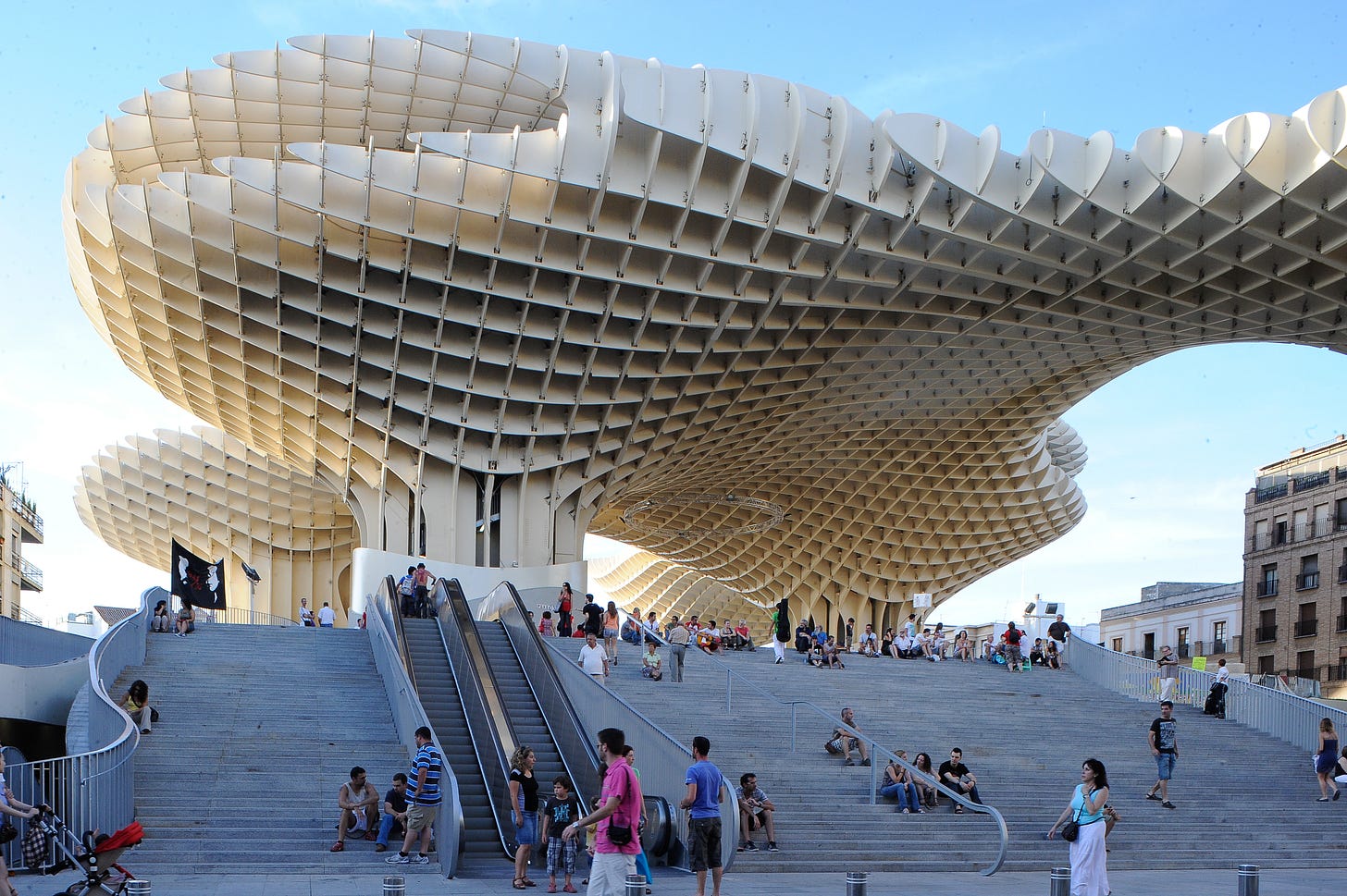Genre of the Day - Sevillanas
Album of the Day - Sevillanas Democraticas by Gente del Pueblo (1976)
Today’s genre reminds me of the merits of digging yourself in the mud and appreciating the intimate immediacy of where you reside. I’ve covered a lot of southern Spanish music from here and its fascinating chordal senses and politicized histories, from rock andaluz to copla. Now that this project is moving into its last third, I seek to avoid repeating stories we’ve already experienced, but immediately after I refreshed the random genre choice I simply got another Spanish form of music, which seems like a universal sign. Beyond the boundaries of Seville itself, today’s genre also reminds me of the nitty-gritty of song construction, which seems like it’ll be pertinent in my life over the course of this frightening songwriting class that I touched on yesterday.
Sevillanas hail from, you guessed it, Seville, a city marked by its quintessential visions of Spanishness despite its smaller stature in comparison to cosmopolitan hubs like Barcelona and Madrid. The city gained an outsized importance in Andalusia as the sole river port in Spain, and its proximity to the southern Atlantic coast brought the trade inflows of the Empire directly to the historical hub. Its cultural influence is similarly renowned in distilling the essence of flamenco and Andalusian culture for millions of tourists each year (three million, to be exact) who flock to its array of architectural wonders and to observe the vibrancy of its flamenco tradition—Seville lays claim to the fact that the roots of the tradition in a musical expression for the marginalized Romani community began in the city.
Sevilllanas grew out of the form of seguilladas, which prominently feature in Don Quixote, a poetically inclined form of flamenco. As a songwriting mode, sevillanas pay particular alliterative attention to “alternatingly assonant” rhymes. Assonance is subtle, and probably more easily executed in a vowel-forward language like Spanish than English; it indicates rhymes that are contained internally within a word in vowels rather than the consonants ending words that typically define rhymes in English. Sevillanas follow the structural scheme of (7a 5b 7a 5b), and I fear I’m not well versed enough in poetry to properly interpret what that means. If my assumption is correct, it indicates seven lines of one assonant rhyme, five lines of a different rhyme, and so on and so forth. Such distinctions carry great weight in flamenco—forms are differentiated as distinctive palos, which refers to the characteristic rhythmic, lyrical-structural, and modal natures of each form. Beyond the aspect of sevillanas as a peculiar, asymmetrical songwriting mode, the genre features an accompanying dance combining elaborate arm movement and footwork considered particularly lively among southern Spain’s rich scope of dance traditions.
The ‘70s and ‘80s saw a cultural revival of sevillanas as one expression of the vast unearthing and reclaiming of cultural artifacts once either buried or weaponized by Franco. Artists liek the gorup Gente del Pueblo felt emboldened to regain sevillanas’ expressive capacities by elevating the form to protest music. “Pan, T...(rabajo y libertad)” moves with a militaristic rhythmic insitency—guitars flutter and then promptly strike down with vigor as the singer refers unflinchingly to “the blood of our dead.” Alongside the purposeful lyrics, their vision of sevillanas preserves the genre’s focus on melodic movement, exemplified in how the dramatic downward key change completely transforms the tone of “La faena del verdeo” [“The task of greening”]. The tight yet echoey harmonies evoke the grand nature of the city often expressed in its architecture, from Real Alcázar’s stunning Moorish palatial grounds to the world’s largest wooden structure in the avant-garde Metropol Parasol the stunning Real Alcázar. The album prompts us to reflect on the immediate surroundings of our towns and cities, and the aspirational beauty of art that affirms their beauty and history and calls for change to sustain the places we love.








Interesting & well researched, as always !